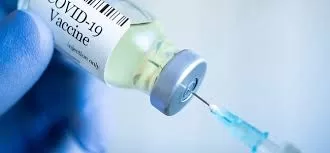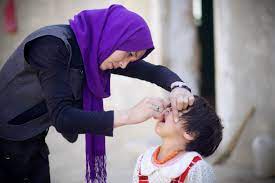
Key points:
- SARS-CoV-2 continues to circulate and evolve with important genetic and antigenic evolution of the spike protein.
- Monovalent XBB.1.5 COVID-19 vaccines across different platforms elicit broadly cross-reactive neutralizing antibody responses against circulating SARS-CoV-2 variants.
- Given the current SARS-CoV-2 evolution and the breadth in immune responses demonstrated by monovalent XBB.1.5 vaccines against circulating variants, the TAG-CO-VAC advises retaining the current COVID-19 vaccine antigen composition, i.e. a monovalent XBB.1.5 as the COVID-19 vaccine antigen.
The WHO Technical Advisory Group on COVID-19 Vaccine Composition (TAG-CO-VAC) continues to meet regularly to assess the implications of SARS-CoV-2 evolution for COVID-19 vaccine antigen composition and advise WHO on whether changes are needed to the antigen composition of future COVID-19 vaccines. In May 2023, the TAG-CO-VAC recommended the use of a monovalent XBB.1 descendent lineage, such as XBB.1.5, as the vaccine antigen. Several manufacturers (using mRNA and protein-based and viral vector vaccine platforms) have updated COVID-19 vaccine antigen composition to monovalent XBB.1.5 formulations which have been approved for use by regulatory authorities.
The TAG-CO-VAC reconvened on 4-5 December 2023 to review the genetic and antigenic evolution of SARS-CoV-2, the performance of currently approved vaccines against circulating SARS-CoV-2 variants, and the implications for COVID-19 vaccine antigen composition. The twice-yearly evidence review by the TAG-CO-VAC is based on the need for continued monitoring of the evolution of SARS-CoV-2 and the kinetics of vaccine-derived immunity.
Evidence reviewed
The published and unpublished evidence reviewed by the TAG-CO-VAC included: (1) SARS-CoV-2 evolution, including genetic and antigenic characteristics of earlier and current SARS-CoV-2 variants, and the impact of SARS-CoV-2 evolution on cross-neutralization and cross-protection following vaccination and/or infection; (2) Vaccine effectiveness (VE) of currently approved vaccines during periods of XBB descendent lineage circulation; (3) Antigenic cartography analyzing antigenic relationships of SARS-CoV-2 variants using naïve animal sera and human sera following vaccination and/or infection; (4) Preliminary immunogenicity data on the performance of currently approved vaccines against circulating SARS-CoV-2 variants using animal and human sera; and (5) Cellular (T and B cell) immune responses following vaccination and/or infection. Further details on the publicly available data reviewed by the TAG-CO-VAC can be found in the accompanying data annex. Unpublished and/or confidential data reviewed by the TAG-CO-VAC are not shown.
Summary of available evidence
- SARS-CoV-2 continues to circulate and evolve. Based on available sequences, there is heterogeneity in circulating variants across WHO regions.
- There continues to be important genetic and antigenic evolution of the spike protein of SARS-CoV-2.
- As of 2 December 2023, XBB descendent lineages including XBB.1.5, XBB.1.16, EG.5, HK.3 and HV.1 accounted for 73% of genetic sequences available in GISAID, and this proportion has declined since then. SARS-CoV-2 variant of interest BA.2.86, with the earliest sample collected in July 2023, has 36 amino acid substitutions relative to XBB.1.5, including in key antigenic sites in the spike protein. The proportion of BA.2.86 and its descendent lineages, including JN.1 (which has one additional substitution in the spike protein as compared to BA.2.86 (L455S)), has been increasing steadily. As of 2 December 2023, BA.2.86 and its descendent lineages, including JN.1, accounted for 17% of sequences available in GISAID, more than half of which were JN.1.
- Several of these XBB- and BA.2.86 derived variants (e.g., EG.5, HV.1, HK.3, JN.1) have independently-evolved changes in the spike protein at a neutralizing antibody epitope involving amino acid residues 455 and/or 456. This highlights the current immune pressure on this epitope.
- In naïve animals, monovalent XBB.1.5 vaccines elicited neutralizing antibodies that cross-reacted well with XBB descendent lineages (e.g., EG.5, HV.1, HK.3). However, BA.2.86 and JN.1 were not neutralized well, indicating that BA.2.86 and JN.1 are antigenically distinguishable from XBB.1.5 in this model.
- In contrast, sera from humans vaccinated with XBB.1.5 monovalent vaccines, with or without recent prior infection, neutralized XBB descendent lineages including EG.5, HK.3, HV.1, as well as BA.2.86 and JN.1. However, there are only limited data on cross neutralization of JN.1.
- The differences observed in cross-reactivity to BA.2.86 and JN.1 in naïve animals, as compared to human sera, likely reflect the cumulative infection- and vaccine-derived immune responses to SARS-CoV-2 in the human population.
- In vaccine effectiveness studies, protection conferred by bivalent (index virus and BA.1- or BA.4/5) mRNA vaccines and a Beta-based protein vaccine against severe disease during periods of XBB descendent lineage circulation remains high. Protection against symptomatic disease and infection is lower and wanes more rapidly over several months. Monovalent XBB.1.5 vaccines were only recently introduced, so VE estimates for vaccines with this composition are still very limited. Preclinical and clinical immunogenicity data of monovalent XBB.1.5 vaccines indicate that higher neutralizing antibody titres against circulating SARS-CoV-2 variants are expected to be associated with higher VE estimates as compared to COVID-19 vaccines with an index virus-based or bivalent (BA.1- or BA.4/5- containing) vaccine antigen composition.
The TAG-CO-VAC acknowledges several limitations of the available data:
- There are persistent and increasing gaps in genetic/genomic surveillance of SARS-CoV-2 globally, including low numbers of samples sequenced and limited geographic diversity.
- The timing, specific mutations and associated antigenic characteristics, and the potential public health risks of future variants remain unknown.
- Although neutralizing antibody titres have been shown to be important correlates of protection from SARS-CoV-2 infection and of estimates of vaccine effectiveness, there are multiple components of immune protection elicited by infection and/or vaccination. Data on the immune responses following XBB descendent lineage infection or XBB.1.5 vaccination are largely restricted to neutralizing antibodies and data on other aspects of the immune response, including cellular immunity, are limited.
- Estimates of VE against currently circulating SARS-CoV-2 variants, including XBB descendent lineages, are limited in terms of the number of studies, geographic diversity, vaccine platforms evaluated, populations assessed, duration of follow-up and comparative estimates for monovalent XBB.1.5 vaccines versus other formulations.
Recommendations for COVID-19 vaccine antigen composition
Given the current SARS-CoV-2 evolution and the breadth in immune responses demonstrated by monovalent XBB.1.5 vaccines against circulating variants, the TAG-CO-VAC advises retaining the current COVID-19 vaccine antigen composition, i.e. a monovalent XBB.1.5 (e.g., hCoV-19/USA/RI-CDC-2-6647173/2022, GenBank: OQ054680.1, GISAID: EPI_ISL_16134259 or WHO Biohub: 2023-WHO-LS-01, GenBank: OQ983940, GISAID EPI_ISL_16760602) as the COVID-19 vaccine antigen.
Other formulations and/or platforms that achieve robust neutralizing antibody responses against currently circulating variants, including XBB- and BA.2.86 descendent lineages, can also be considered. In accordance with WHO SAGE policy, vaccination programmes can continue to use any of the WHO emergency-use listed or prequalified COVID-19 vaccines.
Further data requirements and considerations
Given the limitations of the evidence upon which the recommendations above are derived and the anticipated continued evolution of the virus, the TAG-CO-VAC strongly encourages generation of the following data:
- Immune responses and clinical endpoints (i.e. VE) in varied human populations who receive COVID-19 vaccines with a monovalent XBB.1.5 vaccine antigen composition, across different vaccine platforms, as well as further data on the performance of all currently approved COVID-19 vaccines against emerging SARS-CoV-2 variants.
- Strengthened epidemiological and virological surveillance, as per the Standing Recommendations for COVID-19 in accordance with the International Health Regulations (2005), to determine if emerging variants are antigenically distinct and able to displace circulating variants.
- Clinical evaluation of new vaccine antigens, particularly those emerging from XBB and BA.2.86 descendent lineages.
As previously stated, the TAG-CO-VAC continues to encourage the further development of vaccines that may improve protection against infection and reduce transmission of SARS-CoV-2.









